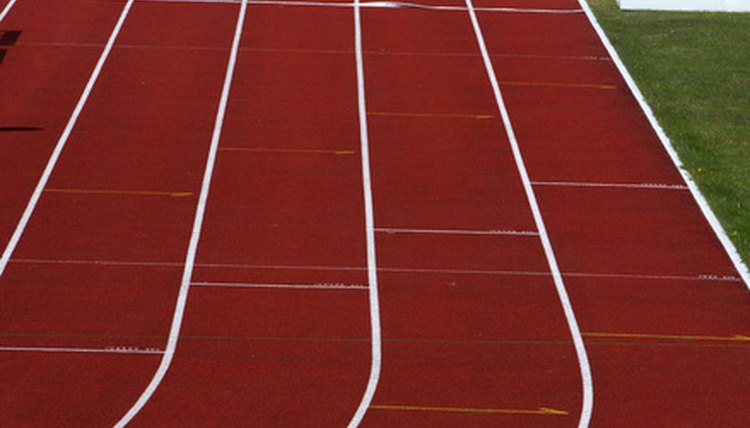100-Meter Dash Rules

The 100-meter dash is one of the most exciting events in track and field, with the Olympic Games gold medal winners earning the title of "Fastest Man in the World" or "Fastest Woman in the World." Here are important rules governing the start of the race, the use of running lanes, and the finish of the race.
The Start of the Race
In a 100-meter dash, runners start from a crouched position with their fingertips just behind the starting line and their feet propped up on starting blocks behind them. If the competition is submitting race results to the International Association of Athletics Federations (IAAF), the starting blocks must be equipped with an approved false-start control apparatus. This apparatus sends an audio signal to an official wearing headphones if the runner's foot leaves the blocks before the starter's gun is fired. The race begins with the starter's gun, after the starter has announced "on your marks" and "set." If a runner leaves his blocks before the gun, that runner is called for a false start and is disqualified from the race.
Running within Assigned Lanes
Eight to 10 running lanes cover the width of the track, and the lanes are numbered with the left-most inside lane assigned number 1. The IAAF specifies that the lanes be between 48 and 49.25 inches wide and the NCAA specifies 42 inches. Runners are required to stay within their assigned lane throughout the race. A runner is disqualified if he crosses into another runner's lane and impedes that runner's progress.
The Finish of the Race
The finish line is a white line, 5 centimeters wide, that runs perpendicular to the lane lines. When any part of the runner's body crosses the front plane of the finish line, that runner has finished the race. After the runners complete the race, they are ranked by the order in which they crossed the finish line. Photo-finish equipment should be used at all IAAF-approved races to help determine the outcome of closely contested races.
References
Writer Bio
Chris Callaway started writing professionally in 2007 and has worked as sports editor, managing editor and senior editor of "The Racquet" as well as written for the "La Crosse Tribune" and other newspapers in western Wisconsin. He graduated from the University of Wisconsin-La Crosse with a Bachelor of Arts in English and communications.
